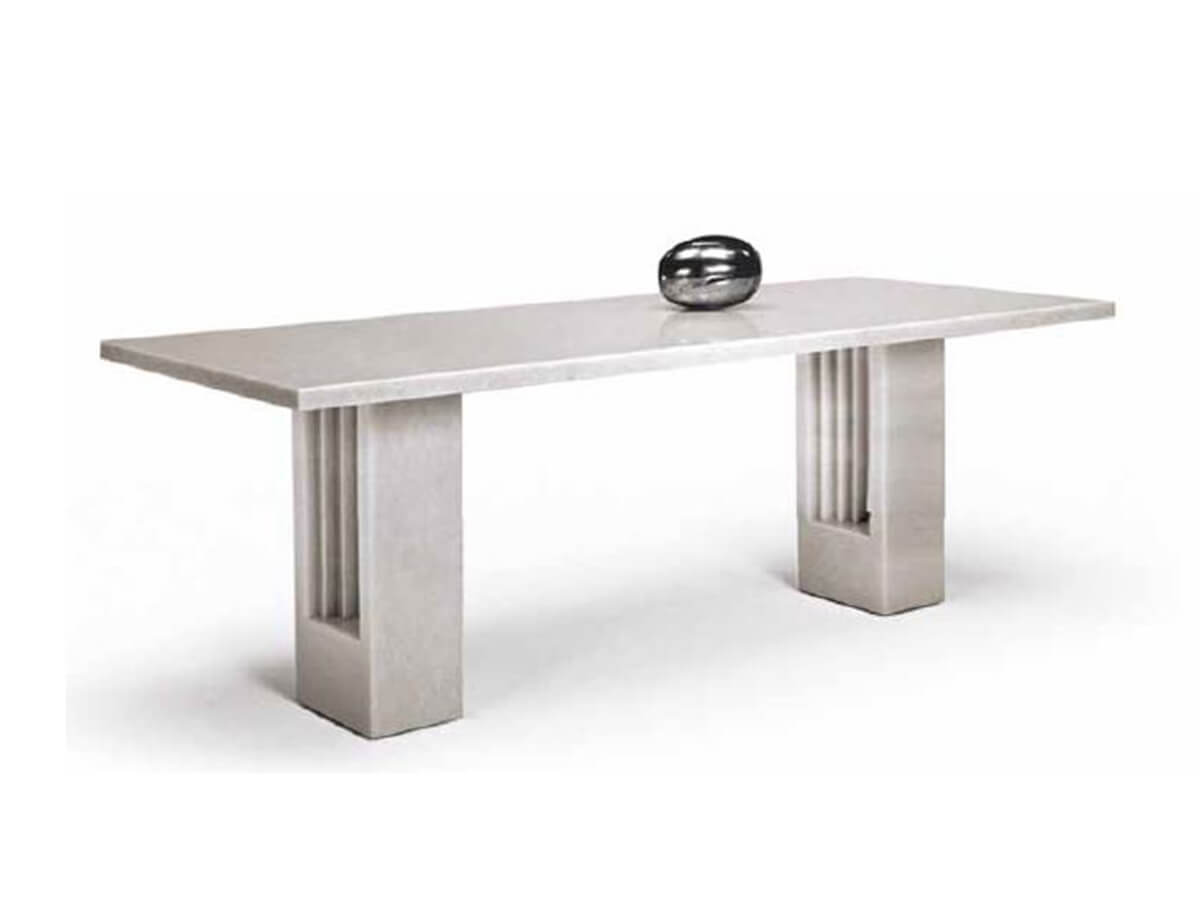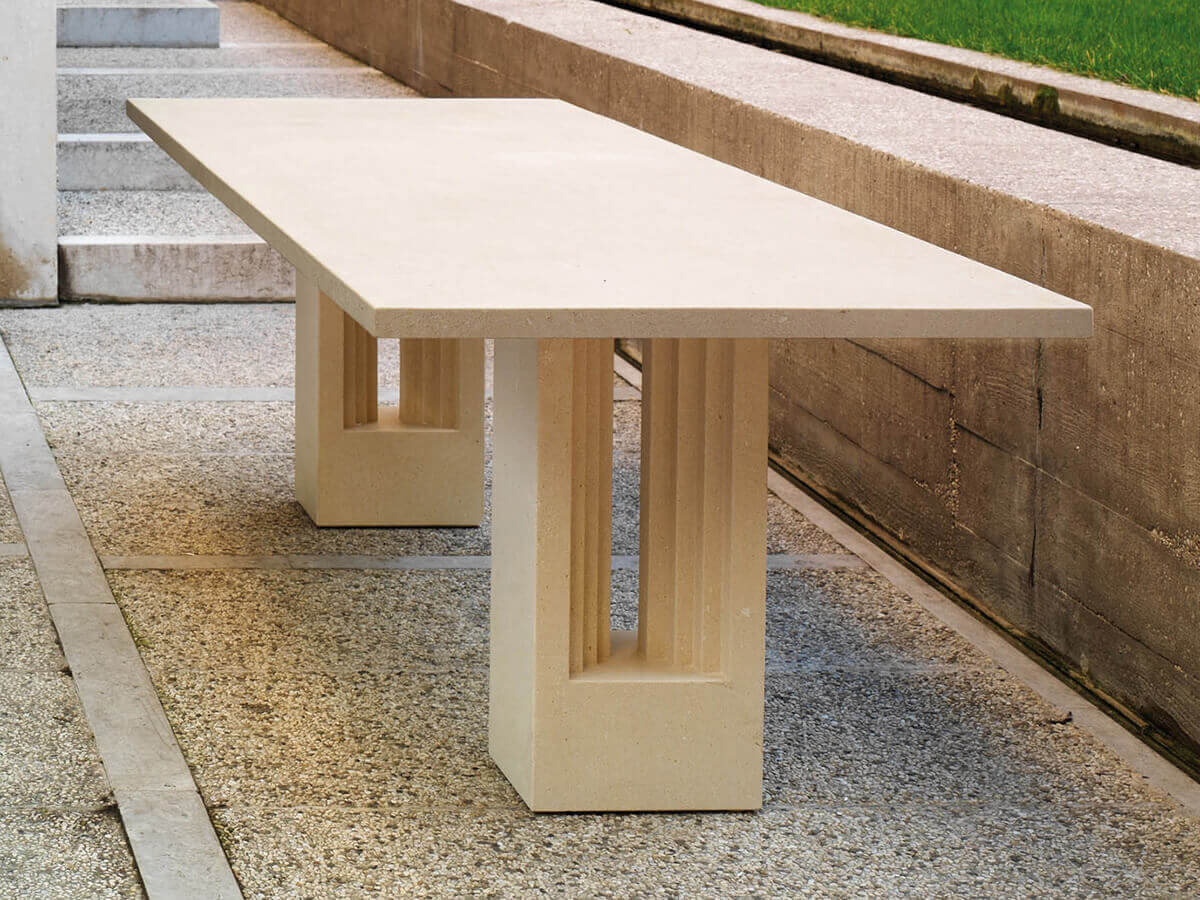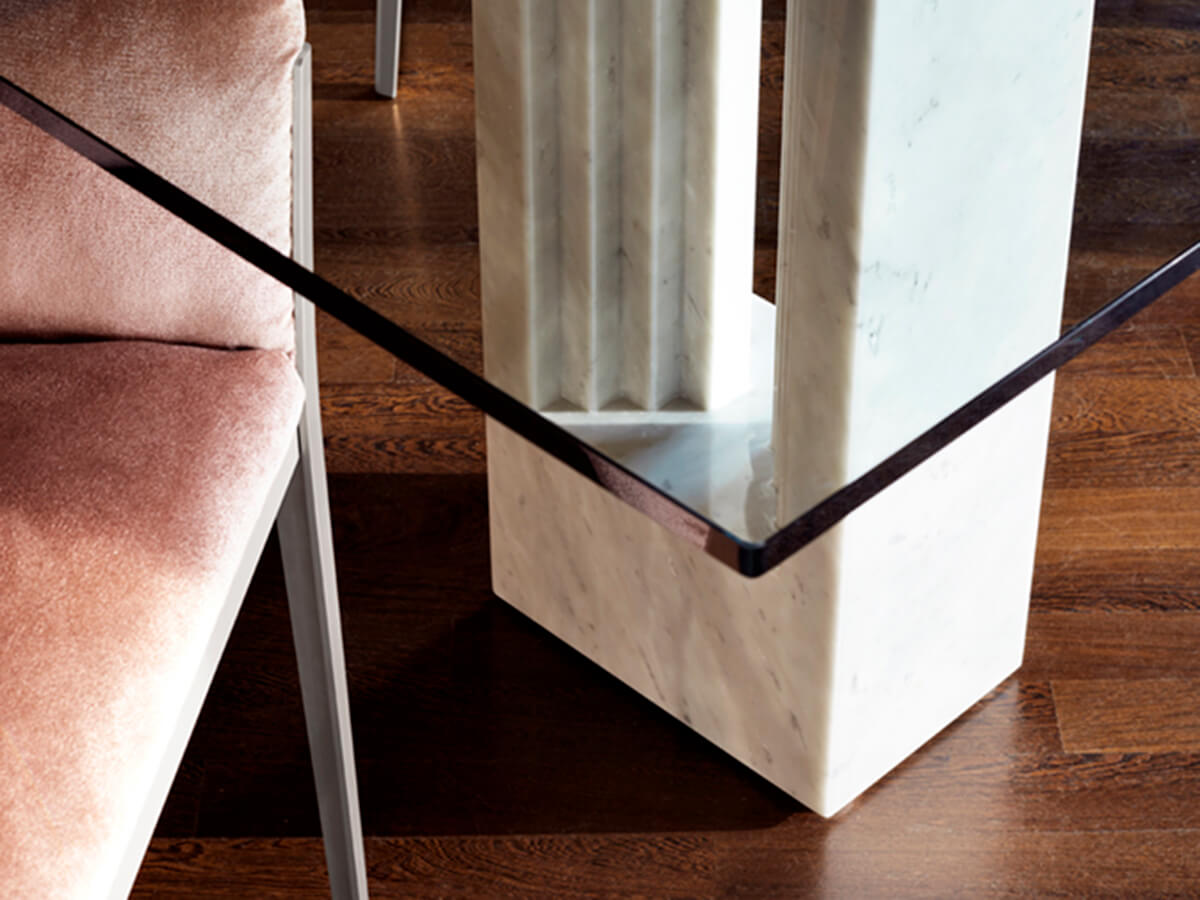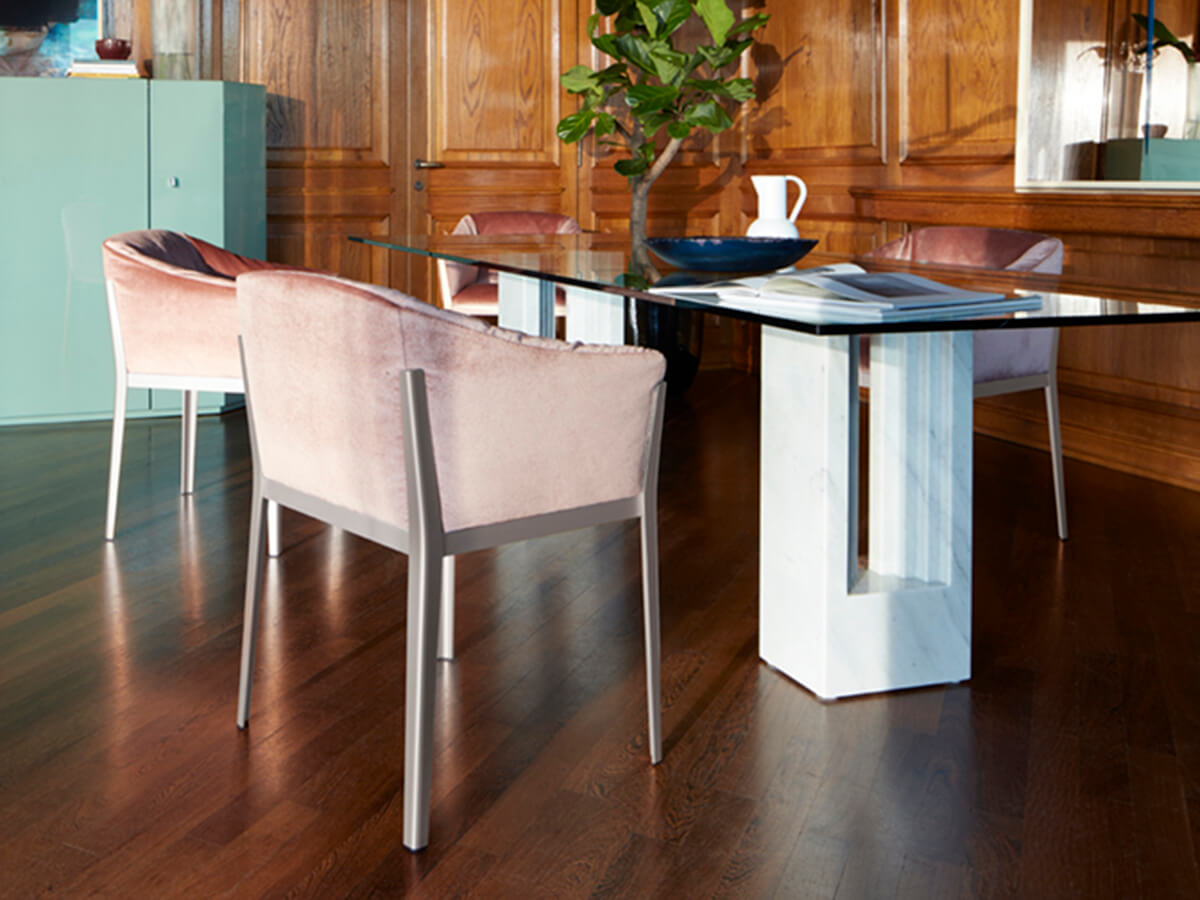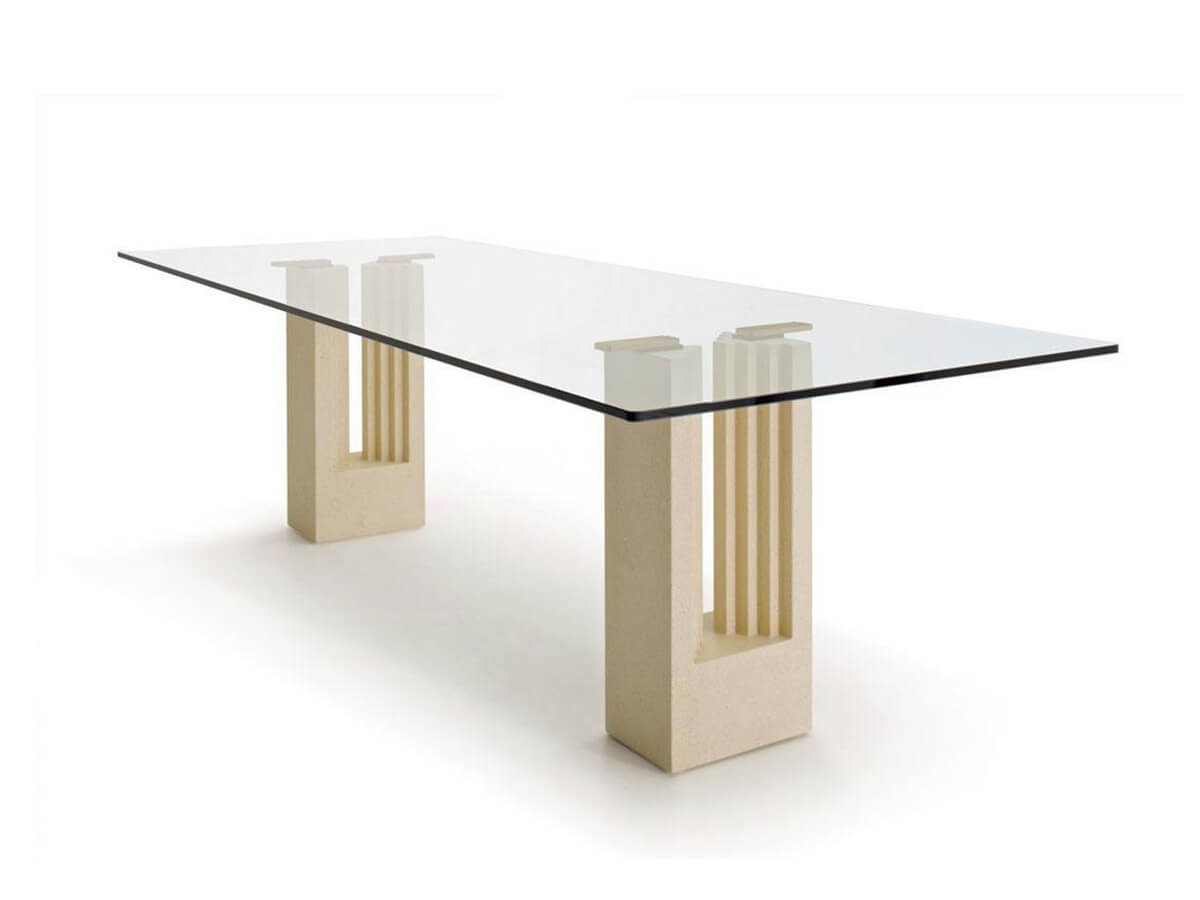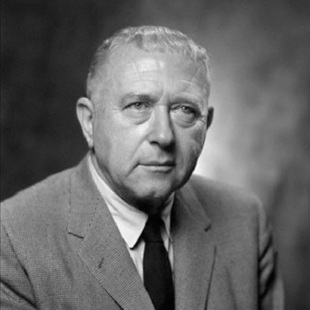Cassina
Delfi Dining Table
Top and Base in Marble
Price starting from € 22.331,00*
*Price valid for the version with top and base in Carrara marble (cod. W04 51).
Delfi table belongs to Ultrarazionale collection launched by Cassina in 1968 and it is made up of sculptural pieces created by the designer Carlo Scarpa. For each, it is evident the care and attention to detail given to make it a unique model of its kind. Delphi was born from a redesign of a previous rationalist model created by Marcel Bauer in the 1930s and inserted within the Bolognese house of Dino Gavina. Some time later, towards the end of the 1960s, Carlo Scarpa began to re-evaluate the original concept by making some changes discussed with the author. Still later, Tobia Scarpa proposed another variant of the original model, adding a glass top that emphasized the refined brass supports and the grooves of the marble bases.
W.220 x D.90 x H.74 cm
Salvioni Design Solutions delivers all around the world. The assembly service is also available by our teams of specialized workers.
Each product is tailor-made for the personal taste and indications of the customer in a customized finish and that is why the production time may vary according to the chosen product.
To discover the full range of services available, visit our delivery page.
Suggested versions (2)
Personalize your request
Top and Base
Select
The colors displayed, for technical reasons, are indicative and may differ from the actual finish. The price may vary in relation to the category / finish chosen. Contact us to receive a personalized quotation.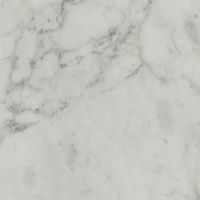 Carrara
Carrara Marquinia
Marquinia
 Carrara
Carrara Marquinia
Marquinia
Select
Select
Founded in 1927 by the brothers Cesare and Umberto in the heart of Brianza furniture, Cassina is one of the long-lived Made in Italy industrial design companies. From the early ‘30s, Cassina brothers identified the strong demand for home furnishings and interpreted in a far-sighted way the renewed taste of the new emerging classes. From this intuition, Cassina started a real revolution in the indoor furnishings design. Since then, the company has been pursuing a path of research and innovation, involving prestigious designers and architects in the study of new furnishings models. In the last few years the collaboration with Gio Ponti has begun. Thanks to this partnership were born the 646 chair, known as Leggera, and the subsequent model 699 or Superleggera.Read more
Designed by
Marcel Breuer
Marcel Breuer (1902-1981), Hungarian architect and designer, was one of the great protagonists of the Bauhaus. After being a pupil of the Bauhaus School in Weimar, he was chosen at a very young age by the director Walter Gropius to manage the school's furniture workshop. He therefore has the opportunity to experience as a protagonist an inimitable season of creative ferments, in which the very concept of “modern furniture” takes shape. His creations of the time feature an innovative material such as tubular metal, to which Breuer manages to give an unusual elegance, and will find the way to mass production thanks to the Thonet company. With the coming to power of Nazism, Breuer, of Jewish origin, was forced to flee abroad, first taking refuge in London for a few years (during which he was able to create furniture for the Isokon brand) and then following his mentor Gropius in the United States. There he became a professor of architecture at Harvard University and began an intense and successful activity as an architect, with works such as the Whitney Museum of American Art in Manhattan or the Hooper House in Baltimore. In the 1960s he met the brilliant Italian entrepreneur Dino Gavina who convinced him to put his furniture back into production for the Gavina company (which was then sold to Knoll a few years later).Read more
